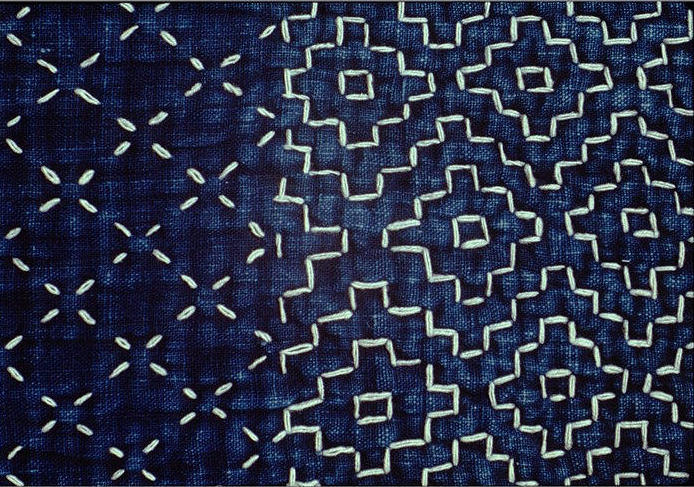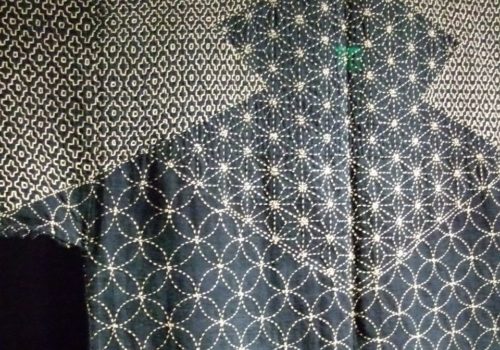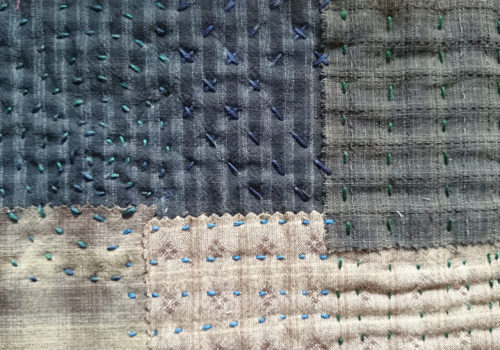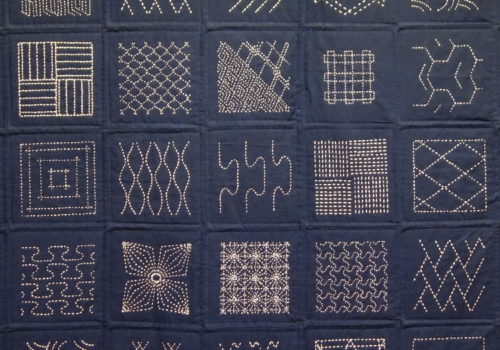Application
This type of embroidery was used to make homespun and homemade clothes last longer. When the garments were worn out, they were pieced together to create a new piece of clothing using simple running stitches. These clothes increased their strength with this durable embroidery.
Meaning & Symbols
Sashiko designs are based on geometric patterns. Common motifs are added to the design such as waves, mountains, bamboo, bishamon, key fret, double cypress fence, arrow feathers, seven treasures, pampas grass, overlapping diamonds, linked diamonds, lightning, linked hexagons and persimmon flower. The embroidery uses special sashiko thread and needle. Modern day sashiko stitching is not restricted to the traditional indigo coloured fabric but uses a variety of colour combinations, and it is considered a beautiful surface embellishment for fabrics.
Origin
Many Sashiko patterns were derived from Chinese designs, but just as many were developed by the Japanese themselves. The artist Katsushika Hokusai (1760–1849) published the book New Forms for Design in 1824, and these designs have inspired many Sashiko patterns.








2 thoughts on “Sashiko”
Comments are closed.